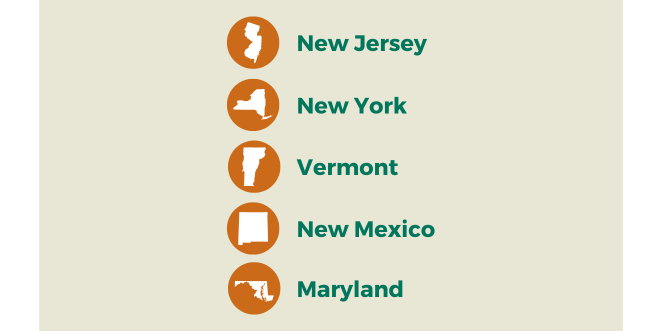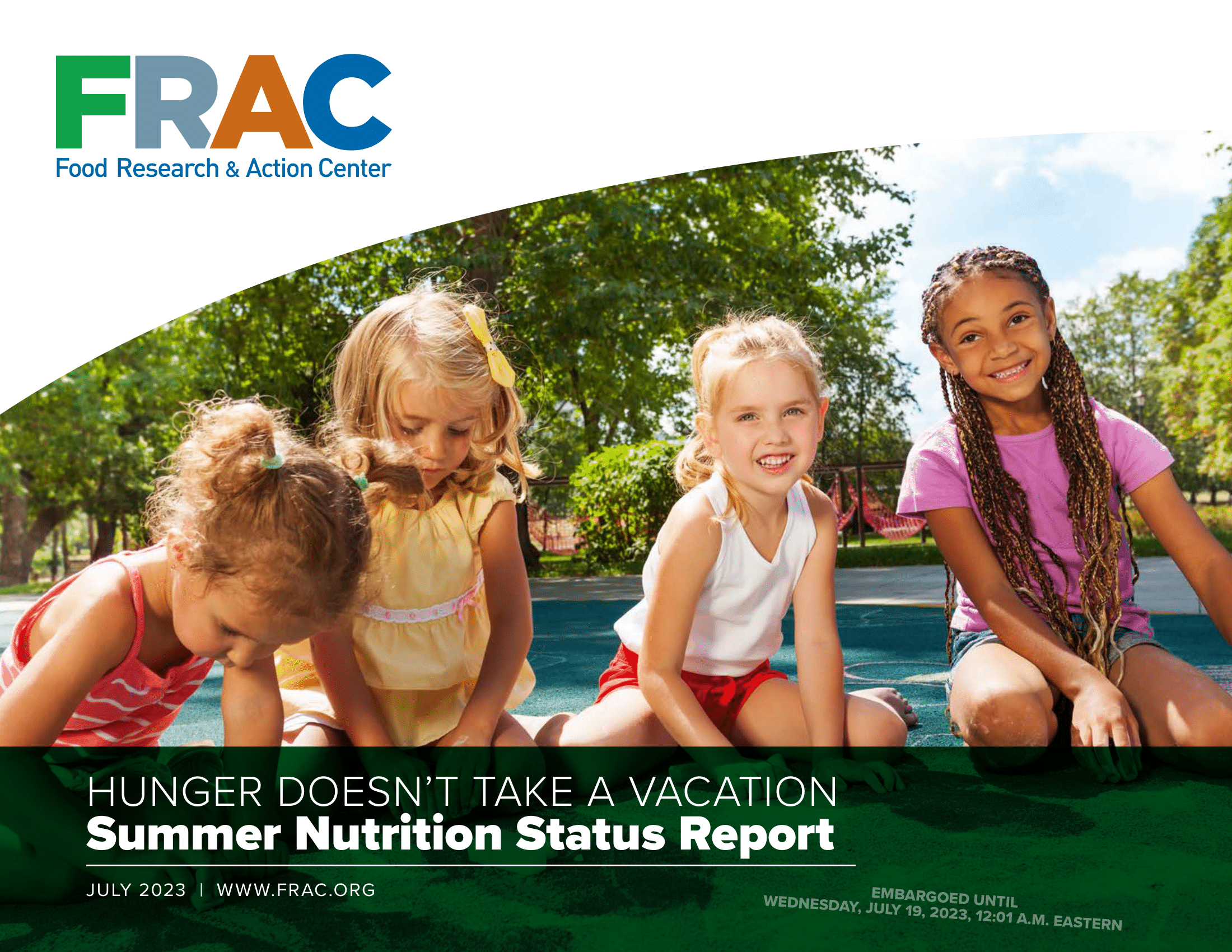Child hunger spikes when school lets out because millions of children lose access to the school breakfasts, lunches, and afterschool snacks and meals they receive during the regular school year. The Summer Nutrition Programs help close this gap by providing free meals and snacks to children 18 and under at sites in low-income communities or that serve primarily low-income children. Most summer meal sites provide educational, enrichment or recreational activities that keep children learning, active and safe when school is not in session.
But an alarming number of children missed out on nutritious meals provided through the Summer Nutrition Programs last summer, according to FRAC’s latest report, Hunger Doesn’t Take a Vacation: Summer Nutrition Status Report 2023.

Key Findings
Summer Lunch
-
- Almost 3 million children received a lunch through the Summer Nutrition Programs on an average day in July 2022.
- This was a decrease of almost 2.4 million children (44.5 percent) compared to July 2021.
- Participation in summer lunch in July 2022 was slightly higher than pre-pandemic levels: 201,459 additional children received a summer lunch in July 2022 compared to July 2019 (the last summer before the pandemic).
Summer Breakfast
-
- Just over 1.8 million children received a breakfast through the Summer Nutrition Programs on an average day in July 2022.
- This was a decrease of almost 2.9 million children (61.6 percent) compared to July 2021.
- Participation in breakfast in July 2022 was also higher than pre-pandemic levels: More than 284,210 additional children received a summer breakfast in July 2022 compared to July 2019 (the last summer before the pandemic).
The drop in participation was driven in large part by Congress’s delay in extending the pandemic child nutrition waivers that allowed all communities to offer summer meals and provided operational flexibilities; the staffing challenges (both within the nutrition programs and summer educational and enrichment programs); and the supply chain disruptions.
State Findings

Summer Nutrition Program Participation, July 2022
Top Performing States

No state met FRAC’s goal of reaching 40 children with summer lunch for every 100 children who received free or reduced-price lunch in the 2021–2022 school year.
Every state saw a decrease in the average daily participation in summer lunch in July 2022 compared to July 2021.
How the Summer Nutrition Programs Work
Local governments, school districts, and private nonprofits can sponsor summer meal sites, which may be located at:
-
- Schools,
- Parks and Recreation centers,
- Indian reservations,
- YMCAs and Boys and Girls Clubs,
- Houses of worship,
- Camps and Summer school, and
- Other places where children congregate.
Sites must be located in an area where at least half of the children are eligible for free or reduced-price school meals, at least half of the children served by the site are eligible for free or reduced-price meals, or at least half of the children are migrant. Underserved rural areas can provide non-congregate meals at sites. Sponsors receive a reimbursement for each eligible meal and snack served at meal sites.

Opportunities to Increase Summer Meal Participation
Programmatic Opportunities
-
- Leverage summer learning funding. The American Rescue Plan Act of 2021 included $30 billion in funding to support summer and afterschool programs. States have until 2024 to distribute this funding, and many still have dollars on the table. Congress should permanently increase federal funding for summer (and afterschool) programs to help ensure that all children have access to the nutritious meals and high-quality programming they need during the summer (and after school).
- Engage governors and elected officials. Governors and elected officials can play a critical role in establishing and strengthening statewide summer meal expansion efforts. This will be especially important as states roll out the new Summer EBT Program and the rural non-congregate option. Learn more about strategies to engage governors here.
- Support and retain sponsors. As the dust settles from the pandemic, summer food sponsors will need additional support to ensure that they can maintain pre-pandemic operations and grow to meet the increased need. State agencies and advocates can survey and connect with sponsors to determine challenges and opportunities for growth.
Policy Opportunities
-
- Lower the area eligibility threshold. Currently, areas are eligible to participate in the Summer Nutrition Programs if they are in a low-income area, defined as an area with more than 50 percent of children eligible for free or reduced-price school meals. The 50 percent threshold keeps many communities where poverty is less concentrated, such as rural and suburban areas, from participating.
- Streamline SFSP and Afterschool Meal Program. Many sites that operate SFSP also serve meals after school during the school year through the Child and Adult Care Food Program (CACFP). Currently, sponsors must apply for and operate two separate programs despite the fact they often serve the same children. Allowing SFSP sponsors to operate year-round would encourage overall program retention as well as eliminate duplicative and burdensome paperwork, while supporting sponsors’ efforts to serve more children in their community.
- Allow all summer meals sites to serve three meals. Most sites can only provide a maximum of two meals per day. Allowing all summer sites to serve three meals would align summer with the school year, when children can receive breakfast and lunch at school and a supper and snack at an afterschool program.
Resources

Hunger Doesn't Take A Vacation: Summer Nutrition Status Report 2023
Download the report
Looking Ahead to Permanent Summer EBT: Recommendations
Read the report
